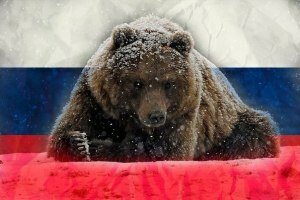Jon Hellevig – Russia Economic News Brief
Jon Hellevig – Russia Economic News Brief
3,477 viewsMARCH 23, 2015
RUSSIA’S ECONOMY HOLDING UP WELL, BUT THE DANGER IS AN OFFICIAL MISAPPREHENSION OF INFLATION

The first quarter of 2015 is about to end and Russia did not fall in an abyss as it was widely predicted last December. It is against these predictions of catastrophe that we must analyze the present situation and the future prospects.
Russia’s biggest challenge for the moment is inflation, or rather the official misapprehension of inflation. I will return to this question at the end after reviewing the first quarter economic indicators.
No economic crisis, but a receding financial crisis
The main conclusion for the moment is that Russia is not in an economic crisis, while it certainly is in a financial crisis, or rather recovering from such. We have witnessed a sharp devaluation of the ruble, high interest rates and soaring inflation, which are elements of a financial crisis. But there has not been any wave of bankruptcies, shrinkage of industrial production or ensuing mass unemployment, which would mean an economic crisis or recession. Industrial production actually grew in 2014 by 1.7% in the year and by an impressive 2.1% in Q4 2014. This year by February there has been only a slight decrease by 0.4%. This compares with the deep crisis in 2008 when industrial production crashed in an immediate shock in just four months by 20%. (October 2008 through January 2009). The result was a near doubling of unemployment from 5.4% in Q2 2008 to 9.4% in Q1 2009. This time around there has been no significant growth in unemployment, the reading for February being 5.8%, which is actually the exactly same level as in February 2014, but up from the historical low point of 5.2% of May 2014. The stable unemployment figures are the more impressive when considering that the economic active population (those working or seeking jobs) has actually increased year-on-year from February 2014 to February 2015 by 600 thousand, from 75.2 million to 75.8 million.
First quarter GDP expected at minus 1.5- to minus 1%
The Russian Central Bank expected a Q1 GDP decline of minus 2% in a report released March 13th, but only a few days later the deputy chairman of the CB, Ms. Ksenia Yudaeva, said in an interview that the bank estimated a GDP decline of only -0.7%. Other domestic and foreign analysts have been far more pessimistic. We have reason to think that the predictions of the CB are the most accurate ones considering their access to the latest real data. Considering this and other factors, we would conclude that a GDP reading on the level of minus 1.5% to minus 1% is expected for Q1.
The positive factors influencing an improved GDP are the good employment situation and industrial production numbers. Sharply lower imports are offsetting the decline in the value of exports, following the drop in oil prices, keeping the net effect of foreign trade on GDP neutral. Furthermore, the price of crude oil has in the period been higher than it was previously expected.
The main negative readings have been in a decrease of retail sales by -4.5% in January and -7.7% in February (year-on-year) and high inflation of a cumulative 6.7% from beginning of year up to mid-March. Although no accurate figures have been published, it is expected that investments are also sharply down.
Predicting the annual GDP is difficult at this point due to so many uncertainties. The main factor is how fast the Central Bank will realize that the key lending rate is way too far above the present inflation rate. Presently the punitively high key interest rate at 14% is suffocating the economy. This is twice as much as the present running rate of inflation. (See discussion on inflation below). If the rates are not timely drastically lowered, we could expect an annual GDP at the level of minus 3% or more. With a timely reaction the GDP for 2015 could come in at about zero. Sooner or later the understanding will arrive and therefore by 2016 Russia will return to positive growth.
These predictions are based on the assumption that the oil price will not take a renewed serious hit. Furthermore the prediction assumes that Russia will not be dragged into a shooting war or such a situation would occur which would have to put Russia de facto into a war economy. Unfortunately such scenarios cannot be excluded.
The present resilience of the economy bears out our earlier research
In December last year we published a larger study on the Russian economy, which can be accessed here. The main thesis of the study was that the Russian economy is much more diversified than it is commonly argued. In particular, it was shown that the share of oil and gas of the economy was only 16%, although we commonly hear that Russia supposedly does not produce anything and only lives off exports of oil and gas. It was also shown that the industry had grown by 50% during the last 12 years, while at the same time having been fundamentally modernized.
Therefore, it does not come as a surprise to us that Russia is faring relatively well in the present situation, notwithstanding the sanctions and the halving of the oil price. We must agree that the Russian economy is certainly not “in tatters” as it was expected (and wished for in certain quarters). Russia’s present economic problems are comparable with those that the European Union have been suffering for the last five years, with the difference that Russia is timely reacting to them and not drowning itself with debt while keeping the economy afloat. Also, Russia is not suffering from endemic mass unemployment as are most of the EU countries, nor has it passed the bill on to the poor by cutting social benefits as is being done in EU.
First quarter 2015 affected by a set of anomalous conditions
However, it is quite difficult to interpret the health of Russia’s economy based on the first quarter figures, as this quarter has been the one to bear the brunt of the shock effects of the financial crisis. The West slapped the first round of economic sanctions on Russia in March 2014. But it was not until the last quarter of 2014 that the economic woes started to be felt in Russia, mostly due to the coinciding sharp drop in the oil price. (It is a matter of debate whether this decline is a result of geopolitical manipulation aimed at suffocating Russia, or a trade war initiated by the Saudis to destroy the US shale oil industry, or just a question about supply and demand dynamics.)
It was only in November/December that the currency depreciation got out of hand with a fall in ruble value from RUB/USD 43 to 70 from the end of October. This led to a sharp increase in monthly inflation to 1.3% in November and 2.6% in December. The currency depreciation caused a consuming frenzy in December with a growth of 5.3% in the month as people wanted to hedge against future price hikes. Therefore, the drop in January – February retail sales is to a large extent a matter of expedited consumption, spending in December what might otherwise have been spent in the next year, and not necessarily a sign of depression.
The industrial production being down -0.4% per February was to a big extent affected by a decrease in consumption of natural gas due to the exceptionally warm winter. Another factor that was a drag on manufacturing was the spending spree in December leading to lower demand in January and February. Especially this affected the automotive industry, which additionally was hampered by the credit crunch.
The sharp devaluation of the ruble and the inflationary spike caused a panic among consumers, investors, executives and government ministers, but now the markets and decision makers seem to be calming down. And the effects of the end of year wave of shocks have been absorbed.
Effect of sanctions
On balance the effects of the sanctions are not necessarily negative considering the boost they have lent to domestic industry and other positive factors. There are only two real weighty negative effects of the sanctions. One is the cut off of lending to Russian businesses. In this situation Russian corporations (Government?) elected to continue serving their debt to the foreign banks that imposed the sanctions while being deprived access to new Western financing. Obviously this dampened their ability to invest in the economy. No catastrophe followed as it was predicted by ill-intentioned economists such as Anders Aslund and Paul Krugman. The situation has now normalized after significant paying down of debt in the last quarter of 2014. Whatever harm this could do to the Russian economy has been already done and more or less absorbed.
The other lasting effect of the sanctions is, of course, their influence on the appetite of Western businesses to invest in Russia, not least because of certain governments lobbying against it. Here we might be in for the long haul. It will take some time before investors from other, non-Western, countries fill the gap. But Chinese corporations have already started to enter the Russian market in force and other countries, especially Asian, are also coming in.
It’s the inflation, stupid!
Presently the big problem is inflation, or rather the official misapprehension of inflation.
According to most economists, the lending rates must be above the rate of inflation in a healthy economy. This is according to the monetary school, which is not necessarily right. At the very minimum they do not give due consideration to the supply side of the economy, that is, the need to create conditions to increase production, transport infrastructure, commercial space, etc., in order to bring down prices by growth of supply and increased competition. In fact, I would think that the latter is Russia’s historic problem. Thus, it seems to me that the Russian Government and Central Bank have committed an error in their excessive monetary fight against inflation.
Due to this policy the Central Bank is keeping the key lending interest rate at the excessively high level of 14% (down from a peak of 17% in December). The Government, in turn, embarked on a sequestration of the budget by erasing 10% of the planned spending in order to fight inflation.
The saddest thing is that there seems to be a cardinal misapprehension about the actual level of the inflation. The figure most often published in the press and the one officials habitually refer to is the cumulated historic inflation year-on-year, that is, the rolling sum of the past 12 months. Another way to express the inflation rate popular among the Russian ministers is the expected inflation for the calendar year. For some purposes these figures might be useful, for example, for the purpose of indexation of pensions. But they are completely beside the point for the purpose of setting interest rates. Interest rates affect the future, so you should match them with the future predicted inflation, that is, the rate on which inflation is presently running 12 months ahead.
The cumulative inflation for past twelve months has been 16.7% (per mid-March). But now the government expects an annual inflation for the calendar year of 12% (announced in several interviews by key ministers). Thus, they are making a prediction of the inflation pace. Then why not go all the way and predict the future 12 month inflation (instead of only the end of year inflation)? In fact, all the elements for the future 12 month inflation (the running inflation rate) are already baked in to the year-end inflation prediction. The Government knows that inflation from the beginning of this year up to mid-March was 6.7% and predicts a calendar year inflation of 12%. What they are actually saying is that they expect inflation for the rest of the 9.5 months to be 5.3%. This means an average 0.56% monthly inflation for the rest of the year, which in turn gives a running inflation rate at 6.7% for the 12 months ahead.
This forecast of the inflation rate inherent in the Government’s predictions is what should be the foundation of setting the key lending rate of the Central Bank. Instead, the CB is strangling the economy with a rate of 14%, which is double the present running inflation rate.
This habit of determining the key interest rates by looking at the past accumulated inflation could be compared with a doctor prescribing medicine to a healthy patient based on his fever readings of the previous week. In other words, the same as steering the economy through the rear view mirror.
The 6.7% predicted future inflation rate might even be too high a figure under today’s circumstances. The inflation rate has fallen dramatically during the last few weeks, now running at 0.8% for March. The punitive interest rates of the Central Bank and the Government budget sequestration will further smother inflation. On top of this there are strong indications that the inflationary spike of the past few months was caused to a great deal by speculative price hikes instead of a real need to raise prices because of higher production costs. Now that the panic bubble has burst and wholesale prices on some products even seem to be on the decline. On top of this comes the near 15% appreciation of the ruble since the end of January, further aiding to keep prices down.
A key factor dampening inflation is that most food is now produced domestically in Russia thanks to the Russian contra-sanction embargo on import of food from the West. If this was not the case, then inflation would have followed the ruble depreciation in a downward spiral. Russian domestic prices initially adjusted to the new suddenly increased demand of domestic products, but this inflationary factor has now faded away.
Considering these arguments, it would seem to me that the Central Bank should urgently bring down the key lending rate to a level of 10% and further to 8%. It is only a matter of time before this realization will come.
Budget sequestration and expected deficit
The federal budget ran a deficit of 765 billion rubles by February. This equals 7.4% of the GDP. But that comparison is misleading as the budget expenses for the period included special one-time spending in the form of anti-crisis financing. These amounts are nearly equal to the size of the deficit. Budget revenue was in fact only 10% less than in the corresponding period of last year. Subsequently, the government initiated a program of budget sequestration aimed at achieving 10% savings to close the gap. According to the Ministry of Finance, the new budget would leave a deficit of 3.7%.
Ruble appreciation would not be welcome
A further appreciation of the ruble would be a most unwelcome event as the weaker ruble has been a boon for domestic production and has largely kept the country’s budget intact. The excessively high interest rates are luring speculative money to Russia which only serves to artificially strengthen the ruble and fuel stock market speculation. This will not do anything good for the real economy.
Instead of letting the ruble appreciate the Central Bank must use this window of opportunity to lower the interest rates so as to ensure that Russian corporations, entrepreneurs and domestic investors have access to lending with affordable interest rates.
Would you like to share your thoughts?
Your email address will not be published. Required fields are marked *


0 Comments